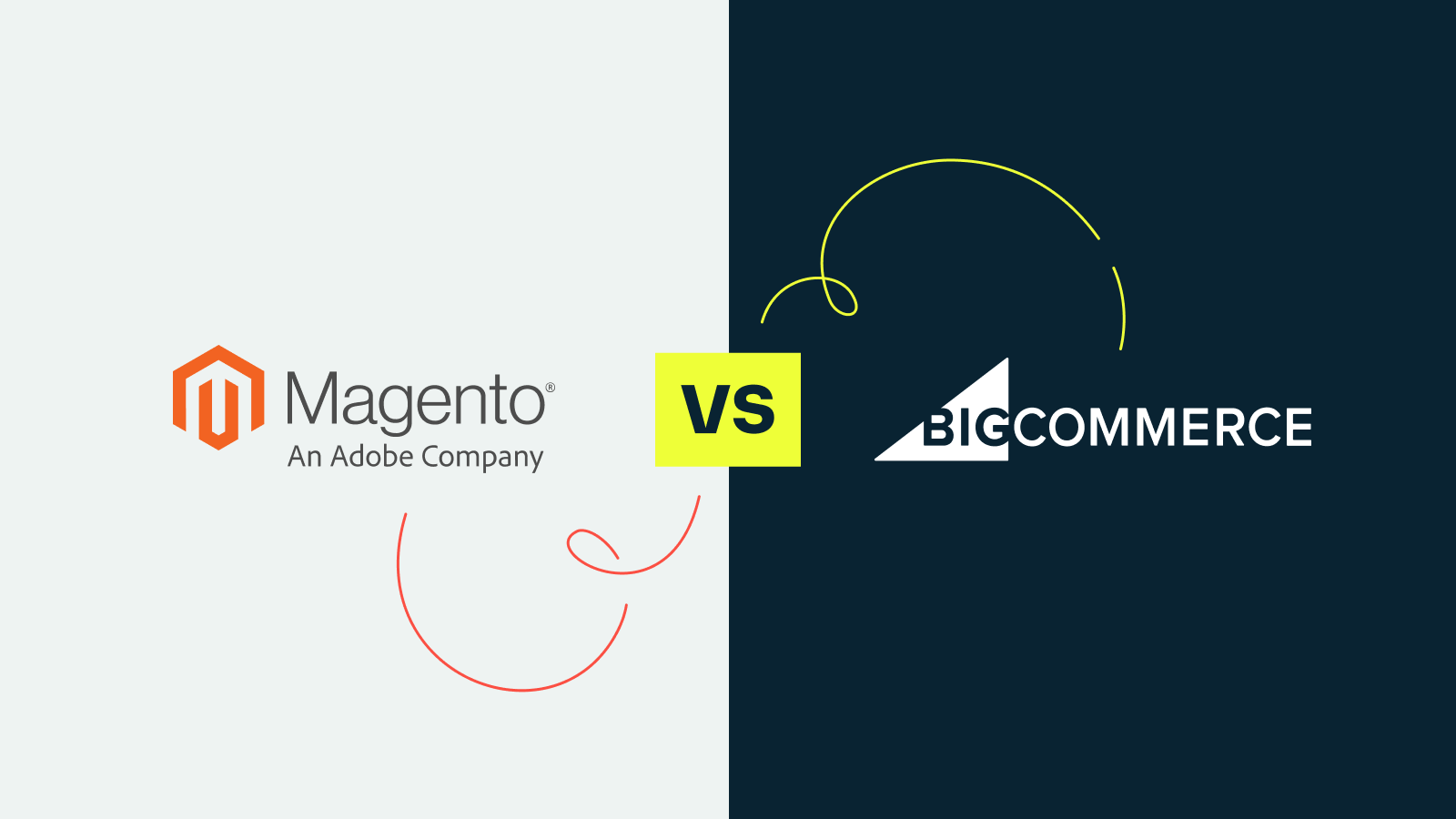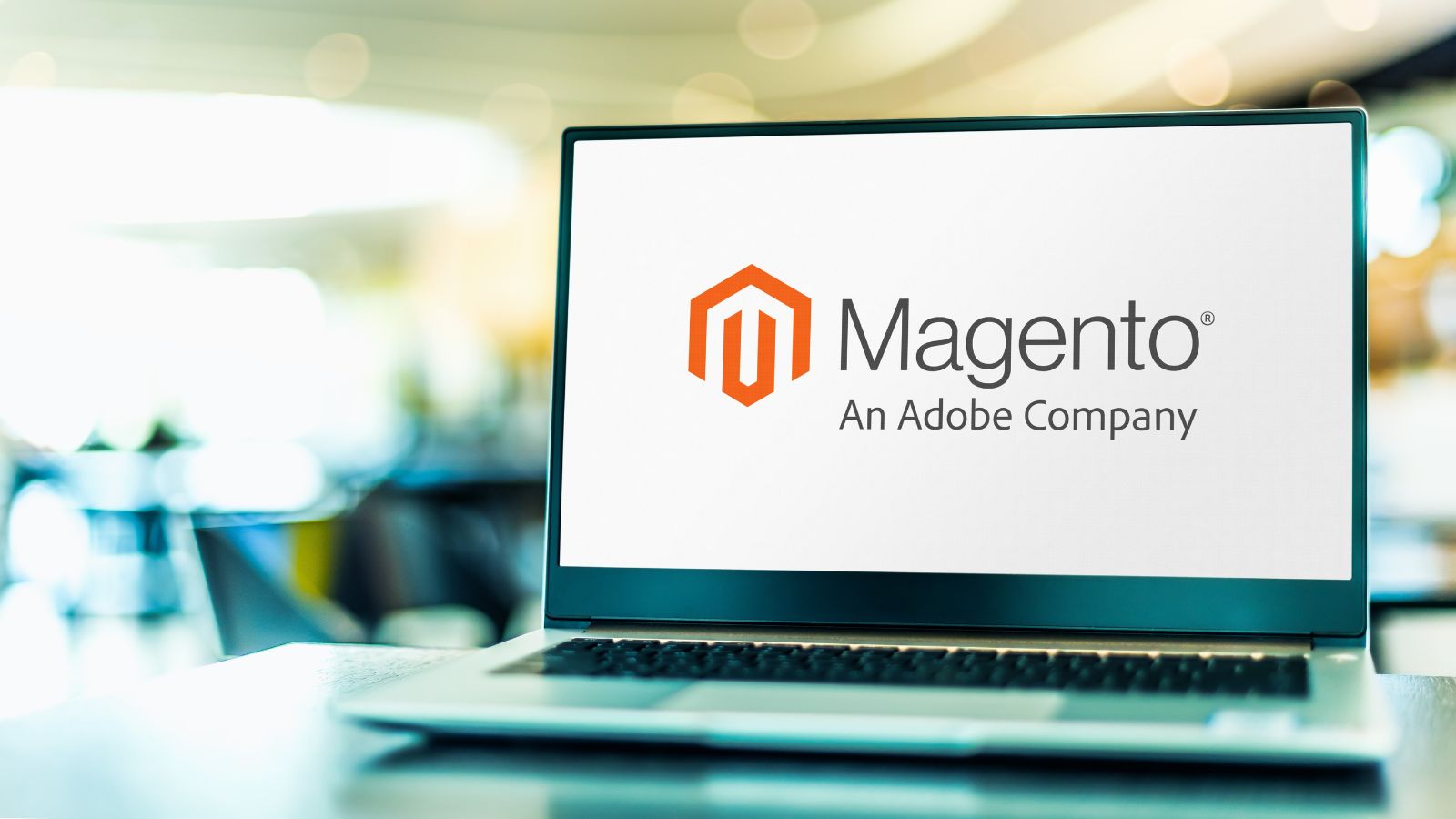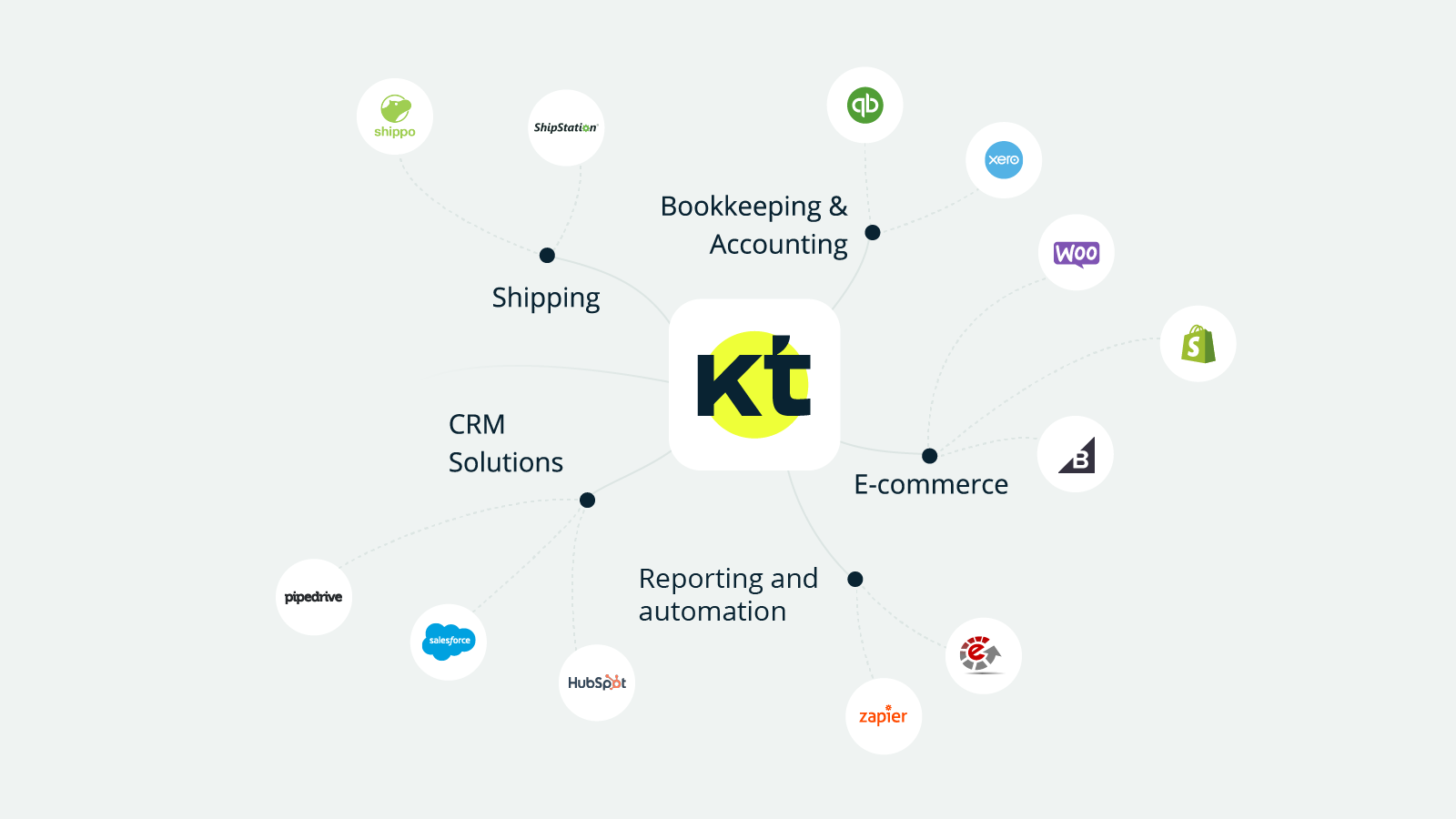BigCommerce vs Magento (Adobe Commerce): Pros and Cons
BigCommerce vs Magento — here is the ultimate guide to comparing these two great platforms to help you determine the best for your business.

James Humphreys

In the third quarter of 2022, e-commerce sales totaled more than $265 billion in the U.S. alone. That represents a rise of nearly 11% compared to the same quarter of 2021 and is a higher growth rate than retail once again.
There’s no getting around it — e-commerce is the way of the future, and without it, many businesses would struggle to stay afloat.
While that is easy to understand, getting your company up and running with an online store can be trickier than it sounds. As the demand for e-commerce has increased, so has the number of service providers that shout promises of being the “best” platform.
Two of the most popular are BigCommerce and Magento, which offer unique advantages and disadvantages for businesses to consider before making a choice.
At first blush, they may seem to offer many of the same features. So, to make the correct decision on which serves your business needs best, it’s important to understand the nuances of each.
The name of the game is synergy
Ultimately, regardless of who you root for when it comes to BigCommerce vs Magento, businesses will need more features to successfully manage their inventory. Katana equips you with everything you need to manage your entire business with maximum efficiency.

BigCommerce overview
Not every small business has the technical skills necessary to create an e-commerce website from scratch. BigCommerce simplifies the process by providing a platform that does much of the work for you.
The company’s flagship offering, BigCommerce Enterprise, is designed to make it easy to manage your entire store from one place — from creating and managing products to processing payments and shipping orders.
The system integrates with popular third-party tools such as QuickBooks, Katana, Google Shopping, MailChimp, and more — making it easy to connect the dots.
BigCommerce also has several features that make it attractive to businesses, such as an unlimited product catalog and support for multiple currencies and languages. The platform is customizable but offers simple preset themes that can get an online store up and running in minutes.
Pros:
- Easy to use and set up
- Customizable design options
- Automatic security updates
- No hidden costs
Cons:
- Limited scalability for larger businesses
- Not as many customization options as on other platforms
- More limited customer service options
Pro tip: Are you a BigCommerce manufacturer needing more oomph from your software? Many turn to BigCommerce order management software integrations to help them take their sales, production, and accounting to the next level.

Magento overview
Known by many different names over the years, Magento is an open-source platform that was first purchased by eBay in 2011 and then acquired by Adobe in 2018 to become the backbone of its e-commerce solutions.
Now part of the Adobe Commerce suite, it leverages the entire Adobe ecosystem and the company’s considerable investment in artificial intelligence and cloud computing to offer a highly customizable, far-reaching solution for businesses.
The platform is designed to provide businesses with a powerful and flexible solution for creating an online store, with features such as catalog management, order processing, payment gateways, shipping options, and more.
Magento also offers a wide range of customization options to tailor your store’s design to stand out from your competitors — whether through custom product pages or unique checkout experiences.
And thanks to its open-source nature, businesses can benefit from a large and active community of developers who are constantly working on improving the platform.
Pros:
- Highly customizable design options
- A broad range of features and integrations
- The large and active developer community for customizations
- Access to Adobe’s AI technology and cloud services
Cons:
- It can be more complex than other platforms for beginners
- Limited customer service options for the free, open-source version
- High cost of entry for some features and integrations
What’s the difference between BigCommerce vs Magento?
The biggest difference between BigCommerce and Magento is that the former is a managed solution, meaning that it takes care of hosting and maintenance for you. This makes it simple to set up your store — but it also means you don’t have as much control over the look or functionality of your site.
On the other hand, Magento requires more technical expertise to get started. It’s open-source, so you must host it and handle all updates and maintenance. But it also gives you more control over your store, allowing you to customize virtually every aspect of the design and functionality.
Additionally, BigCommerce has an obvious focus on social media-based markets like Instagram, Facebook, and Twitter. It is also a friendlier option for small or mid-sized stores just starting in the e-commerce space.
Magento is better suited for larger businesses and enterprises with more complex needs — such as customizations or integration with existing systems.
Key battlegrounds
For a more detailed look at each platform, let’s establish some of the key characteristics that should be examined in the Magento vs BigCommerce debate:
- Price
- Ease of Use
- Marketing
- Security
- Customization
- Scalability
If you can decide on a winner in these six categories (based on your specific business needs), you’ll have the answer to which platform is best.
Price
A few years ago, the easy answer here might have been BigCommerce. Its pricing model was much simpler as a software-as-a-service (SaaS) platform.
You pay a monthly fee — as low as $29.95 per month — for an all-in-one package that includes hosting, security, and other features. For larger operations, they offer additional tools and resources like customer reviews, product filtering, and abandoned cart reminders to help grow your business.
It should be noted that there are thresholds for their price tiers.
- BigCommerce Standard ($29.95/mo), is for online stores generating up to $50,000 in sales each year
- BigCommerce Plus ($79.95/mo) is for those up to $180,000
- BigCommerce Pro ($299.95/mo) extends up to $400,000
There is an additional cost of $150.00/mo for every $200,000 in sales. Suddenly, that rock-bottom price doesn’t look so realistic for a company that is expecting rapid growth.
On the other hand, Magento offered no hosting options for a long time, meaning their pricing was much more complicated.
The basic, open-source platform – Magento Open Source — is still free but requires the store owner to find an appropriate hosting solution and all related maintenance.
But since the Adobe acquisition, they have launched Commerce Pro and Managed Services versions, which offer some of the same benefits as a SaaS platform like BigCommerce.
Unfortunately, Adobe doesn’t have publicly-available price tiers and instead bases them on your business. You’ll have to send them some company information and speak directly to a sales representative to find out the exact cost of the managed plans.
With that in mind, the edge here still goes to BigCommerce for the price, especially for smaller online stores.
Ease of use
When comparing the basic versions of both, it’s no contest. BigCommerce is the clear winner in this category. It’s designed for non-technical users, with an intuitive interface and drag-and-drop page builder.
Plus, it takes care of hosting and maintenance for you — so there’s no need to worry about updating your store or dealing with patches.
Magento could be more user-friendly. As an open-source platform, it requires a good amount of technical knowledge to set up and manage the store yourself — although you can hire a developer to do it for you.
This kind of advantage is huge for people who need more technical background or time to learn a complex platform. Most entrepreneurs who are launching an online store for the first time will want to set things up as quickly, with as little headache as possible. BigCommerce is that option.
When considering the full Adobe Commerce platform, things get a bit more complicated, especially the managed services option. Still, because of the way BigCommerce makes even the lowest-priced plans quite comprehensive, it’s a clear winner here in most cases.
Marketing
One of the biggest things that set BigCommerce apart from Magento is its built-in marketing tools. It has everything you need to run an effective online store, including email marketing, abandoned cart recovery, and more.
Its focus on social media, SEO, and other marketing initiatives makes it easier to reach customers in more places — and more effectively.
Magento also has an extensive suite of marketing tools, but they’re all add-ons that you have to purchase separately. This isn’t necessarily bad, because it gives you the flexibility to customize your setup based on your needs.
But if you’re looking for an out-of-the-box solution with all the bells and whistles included, BigCommerce is better.
Security
Data security is something that simply can’t be overlooked. Magento has an iffy past with the subject thanks to a massive, targeted attack in 2020 that breached a significant number of online stores. Since then, Adobe has invested heavily in improving the platform’s security.
The problem for many stores comes down to technical resources. You’re responsible for all security updates and patches with an open-source platform. BigCommerce takes the burden off your shoulders with automatic updates and maintenance.
Both platforms are PCI compliant, so they meet the necessary standards to keep customer data safe — but it can be a real challenge to maintain that level of compliance when requiring individual store owners to handle their security updates.
Even with the improvements by Adobe Commerce, BigCommerce is still the more secure choice when it comes to automatic maintenance and update services.
Customization
This is where things start to swing toward Magento. Because of the platform’s open-source nature, you have access to virtually all of its code — meaning you can customize it however you like.
On BigCommerce, the level of customization is much more limited. While it does offer some custom coding options (via HTML and CSS), there’s a limit to what you can do without hiring an outside developer. And even then, your options are somewhat restricted by the platform’s template language.
So if your store needs highly customized features that aren’t available in the standard BigCommerce package — or if you’re dealing with a lot of complex integrations — Magento is going to be your best bet.
Scalability
BigCommerce can be an effective solution for larger enterprises. It is used by several multi-national operations, including General Electric, Ted Baker, Gillette, and countless other businesses.
With strong security measures and a focus on scalability, BigCommerce is well-suited for larger businesses. It can also be easily integrated with third-party applications such as POS systems, marketing automation tools, analytics platforms, and more.
Still, Magento is the more popular choice among larger companies. It offers a larger range of features, including advanced B2B capabilities and the ability to support multiple stores from one admin panel.
It’s also better suited for businesses that need customizations or integration with existing systems — something BigCommerce can’t do as easily. Brands like Helly Hansen, Hewlett-Packard, and Liebherr have all converted to the platform.
Ultimately, if you’re an enterprise-level business looking for a solution capable of scaling up quickly and handling large volumes of orders, Magento is probably the way to go.
BigCommerce vs Magento
So which is better? For our six categories, the winners are:
- Price: BigCommerce
- Ease of use: BigCommerce
- Marketing: BigCommerce
- Security: BigCommerce
- Customization: Magento
- Scalability: Magento
Again, this is based on the specific needs of your business. If you’re just getting started with e-commerce, BigCommerce is likely a better fit. Its ease of use and focus on social media marketing make it ideal for small stores.
But if you’re an established enterprise looking for more control over your store and the ability to scale quickly, Magento would be a better option. It requires more technical expertise to set up and maintain but provides much greater customization and scalability.
The name of the game is synergy
Whether you use BigCommerce or Magento, Katana integrates with both, delivering all the advanced features to manage your sales, inventory, and production.

Final considerations for choosing between Magento and BigCommerce
Importantly, both BigCommerce and Magento can integrate with ERP solutions like Katana. This means you can have a unified view of all your sales channels, no matter what platform you choose.
Full inventory management and order fulfillment capabilities are also available on both platforms, so you can have a fully automated e-commerce business that runs without much manual intervention.
In the end, it comes down to your specific needs and preferences — only you can decide which platform is best for your store. But by looking at the pros and cons of BigCommerce vs Magento, you’ll be able to make an informed decision about which one will work best for your business.

James Humphreys
Table of contents
Get inventory trends, news, and tips every month
Get visibility over your sales and stock
Wave goodbye to uncertainty with Katana Cloud Inventory — AI-powered for total inventory control